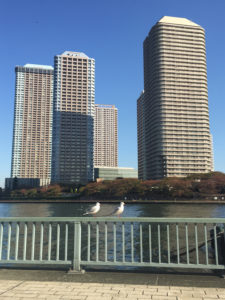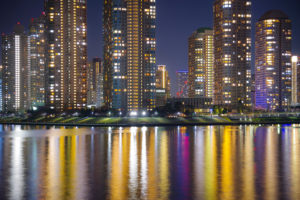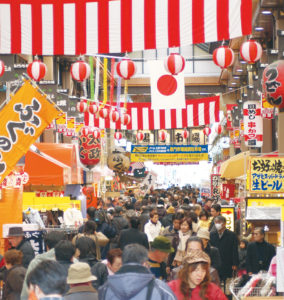

Understanding the wealth distribution across the globe
can offer invaluable insights into potential opportunities
and trends in the real estate market.
That’s why today, we’re turning our spotlight on a recent report by Henley & Partners, a British consulting firm,
which ranks cities based on their millionaire populations.
Particularly interesting for us is the position of Tokyo, Japan’s bustling capital, in this global landscape.
As we unpack these insights, we’ll consider what this means for real estate investment in Japan,
and how these trends might shape our strategies moving forward.
So, whether you’re a seasoned investor or just starting your real estate journey,
this analysis will provide you with key information to navigate the dynamic Japanese real estate market.
Let’s dive in!
According to a report by British consulting firm Henley & Partners,
Tokyo ranks second among the world’s wealthiest cities, following New York.
The rankings were based on the number of individuals with investable wealth exceeding $1 million.
New York topped the list with 340,000 millionaires, while Tokyo came in second with 290,300 millionaires.
However, Tokyo falls behind U.S. and Chinese cities in terms of the number of billionaires.
Tokyo is home to only 14 billionaires in U.S. dollar terms, the lowest among the top 10 cities.
In comparison, Tokyo has 250 centimillionaires (individuals with wealth over $100 million),
which is about one-third of the figure for New York.
The report highlights that wealth in Tokyo is relatively evenly distributed,
with middle-class and lower-tier millionaires holding a significant portion of the city’s capital.
In contrast, other cities on the list have a higher concentration of billionaires and ultra-high-net-worth individuals.
Among the top 10 wealthiest cities,
three are in the United States, three in China, and one each in the United Kingdom,
Singapore, Hong Kong, and Australia.
It is worth noting that these rankings exclude Japan and mainland China,
as investment migration programs play a role in attracting wealthy individuals to the listed cities.
While cities in the United States and mainland China have seen notable increases
in the number of wealthy individuals since 2012,
Tokyo, London, and Hong Kong have experienced decreases.
Tokyo’s number of wealthy individuals decreased by 5 percent, London by 15 percent,
and Hong Kong by 27 percent.
Overall, the report highlights the growing wealth
in the United States and China and provides insights into the distribution of wealth among the world’s major cities.

It is said there are six types of new wealthy people.
- “Company Owner Type
Traditionally, company owners have been a staple among the wealthy.
However, the new wealthy, or “shin-fuyu,” have different aspirations and values.
According to Mr. Omori(journalist), they are not driven by a desire to grow their businesses
or earn more money, but rather to reduce their working hours while maintaining their current income.
This allows them to cherish time with their family and engage
in businesses or challenges that boost their motivation.
There are also cases where these new wealthy act as “sugar uncles,”
helping young entrepreneurs get their businesses on track by passing
on their expertise and receiving advisory fees in return.
2. High-Income Elite Investor Type
This type includes doctors and employees of top-tier companies who boast high incomes.
They have managed to significantly increase their assets by investing their high income
amidst the global financial easing bubble in recent years.
Some of them view purchasing a house as an “investment” and
rapidly grow their assets by buying and selling properties.
3. Know-How Business Type
This new wealthy group has made its fortune from the modern version of the information product business.
Due to improvements in the communication environment,
the advent of smartphones and other devices,
and the spread of SNS and sales platforms, it has become possible to efficiently develop businesses with a small initial investment.
They sell reports for tens of thousands of yen that compile know-how on investments,
second-hand sales, affiliate marketing, business skills, and video distribution.
4.YouTuber Type
This new wealthy class has made their fortune through video distribution,
primarily on YouTube. Some also work as business YouTubers to enhance their credibility and recognition.
Some, like HIKAKIN and Fuwa-chan, have become celebrities due to their fame as YouTubers.
Recently, it seems that even top YouTubers can’t make enough money from video ad revenue alone,
but they are being recognized for their achievements as YouTubers
and are becoming authors or sought-after experts.
5. Crypto Asset Investor Type
These are individuals with knowledge of investment and who invested a significant amount of money
in the early days of crypto assets like Bitcoin.
Many were quick to recognize the potential of crypto assets or empathize with their design philosophy.
Crypto assets are more volatile than typical investments, but these investors are said to
have the patience and courage to withstand this.
6.Crypto Asset Believer Type
These are new wealthy individuals who, while also billion-dollar crypto asset holders,
were “lucky” compared to the investor type.
Most are people who were able to acquire a huge amount of assets by chance after buying crypto assets
recommended by acquaintances.
Many of them lack knowledge about investments and even about crypto assets.
Therefore, they can be referred to as ‘believers,’ who rely on mentor-like figures for investment decisions
or fervently believe in the value of crypto assets.
There were also testimonies from those who had been victims of scams many times and
by chance found that crypto assets were not a scam.”

The top 10 cities were as follows:
- New York: 340,000 people
- Tokyo: 290,300 people
- California Bay Area (USA): 285,000 people
- London (UK): 258,000 people
- Singapore (Singapore): 241,000 people
- Los Angeles (USA): 205,400 people
- Hong Kong (China Special Administrative Region): 129,500 people
- Beijing (China): 128,200 people
- Shanghai (China): 127,200 people
- Sydney (Australia): 126,900 people
Source: YAHOO 富裕層が多い世界の都市ランキング「東京2位」、日本で台頭するシン富裕層の正体

Insight
The article highlights several key trends and observations about wealth distribution across the globe,
specifically focusing on cities with the highest number of millionaires.
New York leads, Tokyo follows:
New York tops the list as the city with the most millionaires,
followed closely by Tokyo. This shows that while the US continues to be a significant hub of wealth, Asian cities,
particularly Tokyo, also hold substantial economic power.
A distinct wealth distribution in Tokyo:
Interestingly, despite being second in terms of millionaires,
Tokyo has a relatively low number of billionaires compared to other top cities.
It suggests that wealth in Tokyo is more evenly distributed among the middle classes and lower-tier millionaires.
This could be a reflection of Japan’s economic policies or cultural factors that discourage extreme wealth concentration.
Rapid wealth growth in the US and China:
The number of wealthy individuals is increasing notably in the United States and mainland China,
with five of the top ten cities located in these two countries.
This may reflect the robust economic growth and innovation in these regions,
leading to the generation of new wealth.
Decline in the number of wealthy individuals in certain cities:
While the overall trend points to an increase in the number of wealthy individuals,
Tokyo, London, and Hong Kong have seen a decrease.
This might be due to a range of factors, from changes in economic conditions to
shifts in migration patterns of the wealthy.
Role of Investment Migration Programs:
Seven of the top ten wealthiest cities are in countries that offer investment migration programs,
which might be a significant factor attracting global wealth to these locations.
This analysis highlights the dynamic nature of global wealth distribution,
influenced by diverse factors ranging from local economic conditions to international migration trends and policies.
For businesses, understanding these trends can help in strategic planning and identifying potential markets.

Toshihiko Yamamoto
Real estate investing consultant and author.
Founder of Yamamoto Property Advisory in Tokyo.
International property Investment consultant and licensed
real estate broker (Japan).
He serves the foreign companies and individuals to buy and sell
the real estates in Japan as well as own homes.
He holds a Bachelor’s degree in Economics from
Osaka Prefecture University in Japan
and an MBA from Bond University in Australia
Toshihiko’s book, “The Savvy Foreign Investor’s Guide to Japanese Properties: How to Expertly Buy, Manage and Sell Real Estate in Japan” is now out on Amazon, iBooks (iTunes, Apple) and Google Play.
About the book
Amazon.com Link

